- Home
- Georgette Heyer
Acting on Impulse Page 5
Acting on Impulse Read online
Page 5
“Little Bride! Have you forgotten me? Don’t go away!”
She paused on tiptoe, looking from him to Ruth. Her hands were clasped behind her; she stood half turned away, in the attitude that Peter remembered so well, poised for flight.
“Have you forgotten the poor wretch whom you comforted, Bride? I’ve come to thank you.”
The elfish little smile peeped out. Bride came forward, dancing.
“Yes, I remember. Of course, I remember. Did you—oh, did you go back to her?”
“Thanks to you, little lady. Here ‘she’ is—come with me to tell you that it’s all right again.”
Bride nodded and smiled to Ruth.
“I am so glad! I could not bear to see you so unhappy. It hurt me so. Do you understand, I wonder?”
She had drawn closer to Ruth, and sank down on her knees now, waving to Ruth to sit down on the tree-stump.
“I do understand.” Ruth stretched out her hand. “And I’m—so very sorry!”
“For me?” The little lady looked up at her wonderingly. “It’s so long ago! Too long to remember! And you—you are happy now?”
“Very, very happy,” Ruth answered. “But if it had not been for you, we should both have been miserable still.”
The little lady came to her feet. She pressed her hands to her eyes, hiding them, but they saw her lips quiver.
“That hurts, too. You are happy, and you don’t want me.” Her hands came away, and she was smiling again. “Never mind, I’m not real, you know. I died—oh, long, long ago! Thank you for coming.”
She kissed her fingers to them, and danced back, laughing a little.
“Ah, don’t go! Not yet.” Ruth got up quickly. “Please stay. Just a little longer.”
“No. Oh, no! You don’t want me now. Goodbye.
Peter held out his hands again.
“Little lady, won’t you let me touch you?”
She came forward, tentatively.
“Touch me? Why must you? You see, I’m dead.”
But she held out her hand.
Peter took it gently, and bent to kiss the slender fingers. And as he did so he heard a quick step behind him, an exclamation, and a cry from Ruth. He turned, and saw a tall, black-haired man standing watching him. He had come down the cutting, and stood now a few paces away, his hat in his hand, a frown in his anxious eyes.
The little lady moved first. A sobbing sigh escaped her, and she went falteringly towards the newcomer.
“You’ve—come back—at last! Anthony, forgive me!”
As one in a dream Peter saw the strange man go to meet Bride, and heard him speak.
“I’ve come to ask your forgiveness, Bride.”
Then the little lady seemed to crumple up, but the man’s arms were round her, and she fell against his breast. The black head was bent over hers for a long minute, and then raised swiftly.
“Whoever you may be—please—she has fainted! Would you—”
Ruth ran to him. Between them they laid Bride down upon the soft moss, while Peter ran to where he knew a brook wound its way through the wood.
“You’re—you’re—Captain Jermyn?” Ruth asked.
He was kneeling beside Bride, chafing her cold hands.
“Yes, yes. She’s so cold. Do you think—will—”
“She has only fainted,” soothed Ruth, a hand on the little lady’s wrist. “My fiancé has gone for water. It is all right.”
“Your fiancé? I was afraid when I saw—Ah, the colour is coming back into her cheeks. Bride, Bride! Look up! I ought not to have startled her so.” His eyes never left that pointed, elfin face.
“Hush! She’ll come round. Give her time.”
“I went up to the Place and heard that Colonel Flower had sold it, and that—my Bride—my beautiful Bride—was mad!”
“It happened when she heard that you were killed. Oh, why have you stayed away all this time?”
He stroked the feathery curls back from the little lady’s brow.
“I was taken prisoner. Nearly killed.” He touched a long scar on his temple. “It knocked me silly. Couldn’t remember anything. I was sent into Switzerland after a time with a batch of prisoners. Didn’t know who I was or anything about myself. At the end of the war I was shipped over to England and Dr. Strange—you’ve heard of him? He’s a marvel—put me right. It took ages, but he did it, and I’m here.”
Peter came running with in his brandy-flask. Ruth took it from him, but it was Jermyn who bathed the little lady’s forehead.
She gave a fluttering sigh, and her long lashes lifted. Straight into her lover’s eyes she looked, and, smiling as one awakened from a long sleep, stretched out her hands.
“I’ve been—dreaming! Anthony dear!”
Ruth and Peter drew away quietly to the cutting. Just once they looked back, and the little lady was in Jermyn’s arms, her lips to his. One of her tiny white hands caressed his dark head, the other clung to the collar of his tweed coat. Silently Ruth and Peter went down the cutting. Not until they came out on to the road did Peter open his lips.
“We’re told that the age of miracles is past,” he remarked.
Ruth caught her breath on a sob.
“Oh, my dear! The poor little thing—and he! It’s—it’s a good world!”
“Not so bad,” agreed Peter, and kissed her.
THE END
READING “THE LITTLE LADY”
It is quite incredible to me, that if this story had ended with its first “chapter,” two thousand-some words in, it would stand as Georgette Heyer’s only paranormal work.
You come through that first encounter between the lovelorn Peter and ethereal Bride quite ready to be convinced that she is the ghost she claims to be – the atmosphere of the wood, from the outset, is deliberately eerie and otherworldly, as is the sprite-like Bride herself, and had the story concluded with her disappearance into the leaves, her work on this earthly plane complete when she convinces Peter to return to his fiancée Ruth and apologise for the fight that ended their engagement, then “The Little Lady” would have remained the vaguely supernatural fairy tale that it initially appeared.
But Heyer does not end it there, instead giving us Peter reunited with his Ruth, the two of them determined to return to that enchanted wood to thank Bride for her intercession in their relationship – and, no doubt, to check on her wellbeing. It is interesting that neither Peter nor Ruth believes for an instant that she might be other than mortal, as far as we can tell, despite her lachrymose words and the bell-like distant laughter and her anachronistic mode of dress—which is never explained, by the way. Instead, they are filled with pity over her plight, the desolate young woman left mad with grief after the Great War has taken away her one chance at lasting happiness.
Of course, it is estimated that upwards of 750 000 British soldiers died in that war, with a further quarter million dying as a result, which was something like 12% of the nation’s total population at the time. There were many young women similarly stricken with such losses – Heyer, too, lost those close to her; everyone did – so when the story takes a turn from the paranormal to the psychological, and we are told, with some relish, by the local hostelry’s landlady the tragic tale of Bride’s lost love, Captain Jermyn, we begin to understand that sweet, soulful Bride is not dead but dissociative, and the story becomes one of coping with trauma and a study in human behaviour, making it clear that real world demons – and ghosts – are even scarier than their fictional, sepulchral counterparts.
The continued story also acts, perhaps, as a way to exorcise some of those ghosts and demons – especially given the wish-fulfillment nature of the conclusion.
The too-fortuitous return of the earnest Captain Jermyn, who knows how many years later (he was one of the early casualties; the war began in 1914 and ended in 1918; the story was published in 1922 – it could well be that he was MIA, presumed dead, for eight years at the time of this tale), right when Bride has allowed the gentle Peter to take her
hand and thus prove her corporeality, is something of a convenience, and can’t help but seem rather too pat. We’d rather believe Bride was long-dead than that her long-lost love should return, with an amnesia backstory to explain his continued absence, exactly at that moment. But in a world ravaged by war, and with so many loves lost to so many young ladies just like Bride, the happy ending must have been a tender and even healing vision of what might have been, and it is very understandable that it should have come from the pen of one then still so young. (Bearing in mind, Heyer was just twenty years of age when this story was published, regardless of how much earlier she may have penned it.)
It is not a story that is particularly Heyer-esque. Not at all. Well, except that the reported histrionics of Peter and Ruth perhaps hold some parallels in the tempestuous beta couple Isabella Milborne and George Wrotham in Friday’s Child (1944), and Heyer’s knack of building a character in just a few broad strokes is entirely present here, especially in her establishment of Mrs. Tippit, the expository force of the story.
Indeed, throughout her works, Heyer always had a way with succinctly conveying the characters of assorted landlord and landladies, and Mrs. Tippit is no exception, even if the fact that she keeps curtseying to Peter and Ruth seems confusingly anachronistic now. But this is a contemporary story to the time in which Heyer lived, we must assume she knew what the obeisance habits of the working classes were – there is no indication that our happy couple have jobs of any kind; they seem to be of the moneyed, idle drawing-room set – and hey, the domestics in Downton Abbey (which covers the years of 1912 – 1926) curtsey and bow all the time, so we must assume that it was still, somehow, a widespread thing, even in that increasingly democratic age.
However, the remainder of the story remains remarkably free of any indicators that Georgette Heyer was in any way its author. Her favoured turns of phrase are absent, as is any sign of witty repartee – it is, in fact, a withal humourless narrative, unusual, though not unique, in the Heyer canon. It reads like a writing exercise, like a work penned by a hopeful youth soon after the war had ended, and then repurposed as a way to make some quick cash from publication, after her name became established so unexpectedly with the 1921 success of The Black Moth. It’s possible that she set out to write a ghost story, or a parody of one – perhaps, originally, it even ended with Peter determined to reconcile with Ruth, and Bride disappearing into the ether, her mission complete.
I, for one, wish it had. But I understand why it didn’t.
“LINCKES’ GREAT CASE”
INTRODUCTION
Though short-lived, published bi-weekly only from December 1922 to May 1925, The Detective Magazine is notable as being Britain’s first magazine to focus solely on crime fiction. Edited by George Dilnot, himself a regular contributor and “crime aficianado,” the magazine was unusual in publishing both fiction and non-fiction. It often included articles by former police officers, Superintendents and even Chief Inspectors, all writing about their most memorable cases. Edgar Wallace contributed a four-part serial, “The Flat”, and Stanley Rubenstein wrote “Sheer Luck Again” featuring “Sheerluck Combs”, an obvious parody on the famous Sherlock Holmes stories that had been so successfully published in The Strand Magazine. Georgette Heyer’s first-known detective story, “Linckes’ Great Case”, appeared in March 1923.
Ironically, there is a mystery about this mystery story. Significantly longer than any of Heyer’s other contemporary short stories, her first foray into detective fiction is an aberration. Not only because it was her sole attempt at writing a short story in the detective genre, but also because “Linckes’ Great Case” is not very well-written. Instead of Heyer’s usual deftly-drawn characters, Roger Linckes and his colleagues are two-dimensional and not very interesting. The plot is basic and unfortunately transparent and the timeline is ludicrous. The story unfolds over several months and the poor “hero” looks increasingly inept as the “appalling mystery” of who is selling government secrets to the Russians continues to prove insoluble.
Of course, Linckes gets there in the end but only long after the reader has figured out the answer to this rather dull tale. Though typical of hundreds of similar magazine stories of the 1920s, “Linckes’ Great Case” is not typical of Heyer. Where is the sparkling dialogue? The humour? The interesting plot? Where are the characters who – even in Heyer’s most lightweight stories – live for the reader? Only in the few romantic moments between Linckes and Autonia – “Tony” – does the story come alive. It is as though Heyer as creator is missing from her own story, which begs the question, was this detective story solely hers?
Heyer’s father, George Heyer, was also a writer and was said to have written detective fiction under a pseudonym. Father and daughter often read and edited each other’s work and made suggestions for improvements or change. Later in her life Heyer collaborated with her husband, Ronald Rougier, in writing her detective novels. Of those twelve novels, only Death in the Stocks and Penhallow were written without Ronald’s input, and Death in the Stocks is considered by many people to be her best detective story. Though her husband was only responsible for the “how” of those novels, Heyer was happy to collaborate with him when writing her mysteries. Is it therefore possible that George Heyer was behind his daughter’s sole foray into short detective fiction? Did he offer advice, or even write some or most of the story himself? It is a tempting solution to the mystery of how Georgette Heyer, already such an inventive and entertaining author, came to write anything as ordinary as “Linckes’ Great Case.”
LINCKES’ GREAT CASE
A mysterious leakage of Cabinet documents and the trust of a very charming young person gave Linckes the chance of his life.
I.
THE chief paused and glanced sharply across the table to where Roger Linckes sat facing him, listening to his discourse.
“It is a big job,” Masters said abruptly. “So much is at stake. It’s not like safe stage robbery, where Lady So-and-So’s pearls are stolen. It’s—well, the whole country—perhaps all Europe—is implicated. Maybe I’m wrong to set you on to it. You’re very young; you’ve had very little experience.”
The younger man flushed slightly under his tan.
“I know, sir.”
Masters looked him over thoughtfully, from his grave young eyes to his brogued shoes. He smiled a little.
“Anyhow, right or wrong, I’m going to let you see what you can do. I must admit I haven’t much hope. Where Tiffrus and Pollern have failed, a comparative tyro isn’t likely to succeed. But you did exceedingly well over that Panton affair, and it’s just possible, you might hit on a solution to this mystery.” He drummed on the table, frowning. “I’ve known it happen before. I suppose the big detectives get stale, or something approaching it. Let’s hope you’ll bring fresh ideas into the business. How much do you know about it?”
Linckes crossed his legs, clasping his hands about one knee. “Precious little, sir. You’ve seen to that, haven’t you? Nothing known to the papers, I mean. All I know is that there’s a leak in the Cabinet. Knowledge of our doings is being sold to Russia and to Germany. You say it has been going on for some time. The Soviet got wind of our new submarines. Hardly anyone in England knew about ’em, and yet Russia discovered the secret! Someone must have duplicated the plans and sold them—probably he’s done it many times before—and that someone must be one of those in the small circle of people who knew all the details of the new subs. In fact, he must have been a pretty big man. It only remains for us to find out which one.”
“Very easy,” Masters grunted. “It might have been a secretary.”
“It might,” conceded Linckes.
“You don’t think so?”
“I don’t know. It doesn’t seem likely. Who was in that circle?”
“The Government knew all about the submarines,” Masters answered. “But the actual plans at the time of the betrayal had been seen only by Caryu, the Secretary for War, Winthrop, the Unde
r-Secretary, and Johnson for the Admiralty, and the inventor, of course, Sir Duncan Tassel. That rather dishes your theory, doesn’t it? Naturally, Tassel is above suspicion; so is Caryu; so are the other two.”
“Are you sure that no one else knew of the plans?”
“No, I’m not sure. I’m convinced that someone else did know—must have known. Winthrop swears no one could have known, but he can’t supply a counter-theory. He’s more or less running the investigation, you know.”
“What does he say?”
“He’s terribly worried, of course. We thought at first that his secretary was the man, but we can’t find the slightest grounds for suspicion against him, and Winthrop’s had him in his employ for years. It’s the greatest mystery I’ve struck yet. We’ve been working to dis-cover the betrayer for months, and we’re no nearer a solution now than we were when we began. And still it goes on. Take the affair of the negotiations with Carmania. They leaked into Russia, we know. Or take the case of the submarines. Those plans weren’t stolen, they were just copied. The only person, seemingly, who could have done it was Winthrop. He alone knows the secret of Caryu’s safe. The plans were with Caryu for three days. All the rest of the time they were with Tassel, and they never left him for a moment. The thing must have been done during those three days that they were in Caryu’s safe, because before that date they were incomplete, and dates show that they can’t have been copied after they were returned to Fothermere. Now, having whittled the date down to three days, how much nearer the solution are we? Of course, everything points to Winthrop.”
“Or Caryu,” said Linckes quietly.

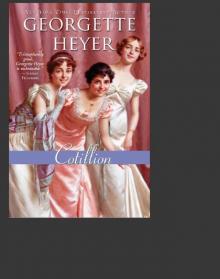 Cotillion
Cotillion Frederica
Frederica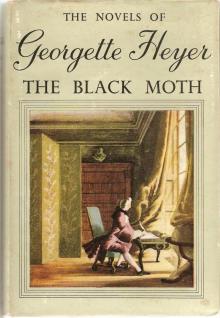 The Black Moth: A Romance of the XVIIIth Century
The Black Moth: A Romance of the XVIIIth Century Lady of Quality
Lady of Quality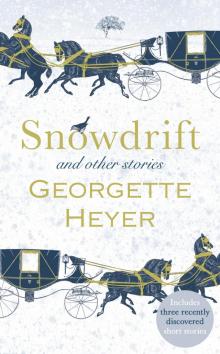 Snowdrift and Other Stories
Snowdrift and Other Stories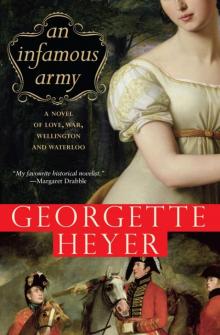 An Infamous Army
An Infamous Army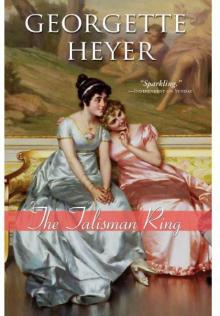 The Talisman Ring
The Talisman Ring Venetia
Venetia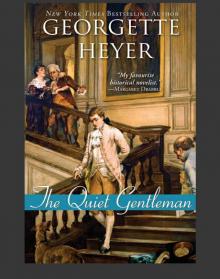 The Quiet Gentleman
The Quiet Gentleman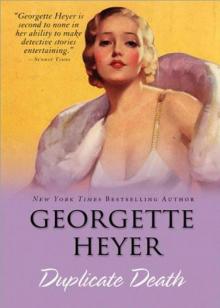 Duplicate Death
Duplicate Death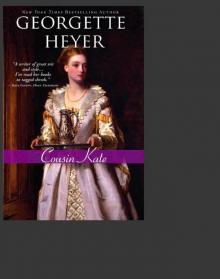 Cousin Kate
Cousin Kate Black Sheep
Black Sheep Pistols for Two
Pistols for Two Sprig Muslin
Sprig Muslin No Wind of Blame
No Wind of Blame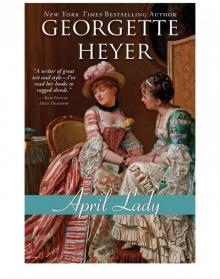 April Lady
April Lady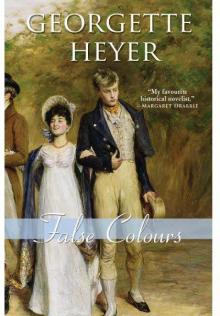 False Colours
False Colours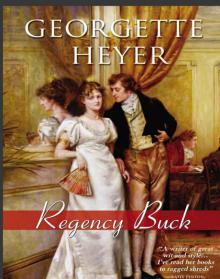 Regency Buck
Regency Buck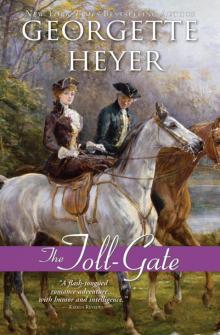 The Toll-Gate
The Toll-Gate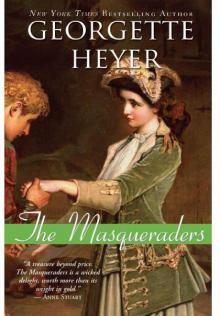 The Masqueraders
The Masqueraders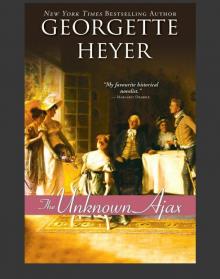 The Unknown Ajax
The Unknown Ajax The Grand Sophy
The Grand Sophy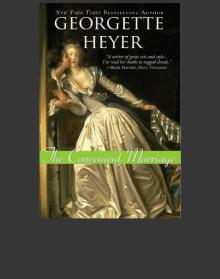 The Convenient Marriage
The Convenient Marriage Faro's Daughter
Faro's Daughter The Conqueror
The Conqueror The Foundling
The Foundling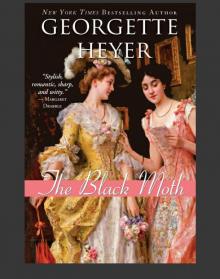 The Black Moth
The Black Moth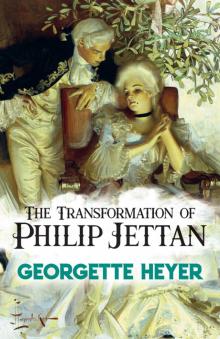 The Transformation of Philip Jettan
The Transformation of Philip Jettan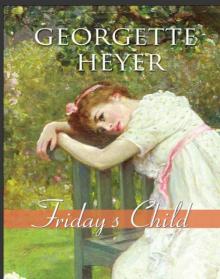 Friday's Child
Friday's Child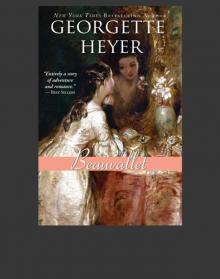 Beauvallet
Beauvallet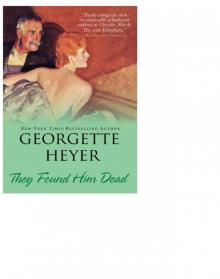 They Found Him Dead
They Found Him Dead Charity Girl
Charity Girl Death in the Stocks: Merely Murder
Death in the Stocks: Merely Murder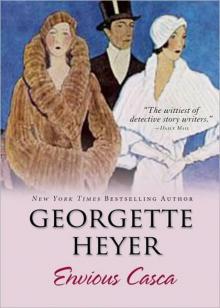 Envious Casca
Envious Casca Behold, Here's Poison
Behold, Here's Poison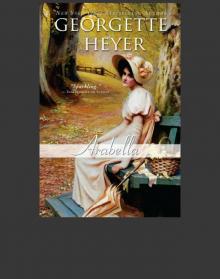 Arabella
Arabella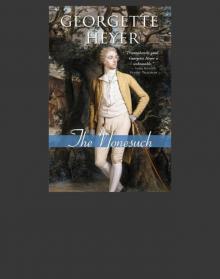 The Nonesuch
The Nonesuch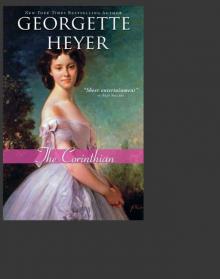 The Corinthian
The Corinthian Jennifer Kloester
Jennifer Kloester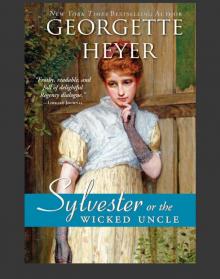 Sylvester
Sylvester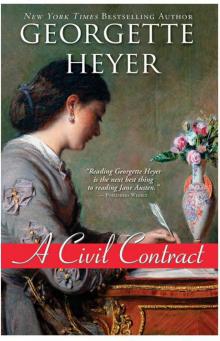 A Civil Contract
A Civil Contract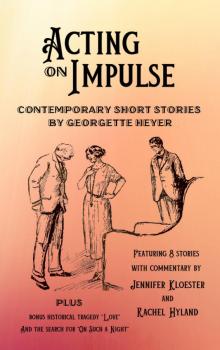 Acting on Impulse
Acting on Impulse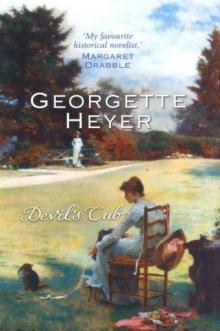 Devil’s Cub at-2
Devil’s Cub at-2 Black Moth
Black Moth Grand Sophy
Grand Sophy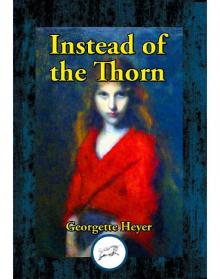 Instead of the Thorn
Instead of the Thorn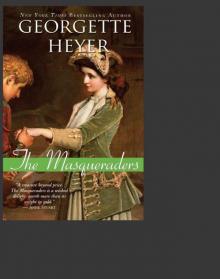 Masqueraders
Masqueraders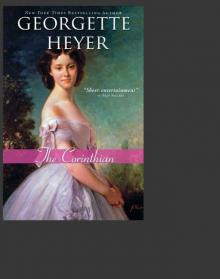 Corinthian
Corinthian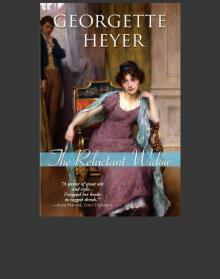 Reluctant Widow
Reluctant Widow